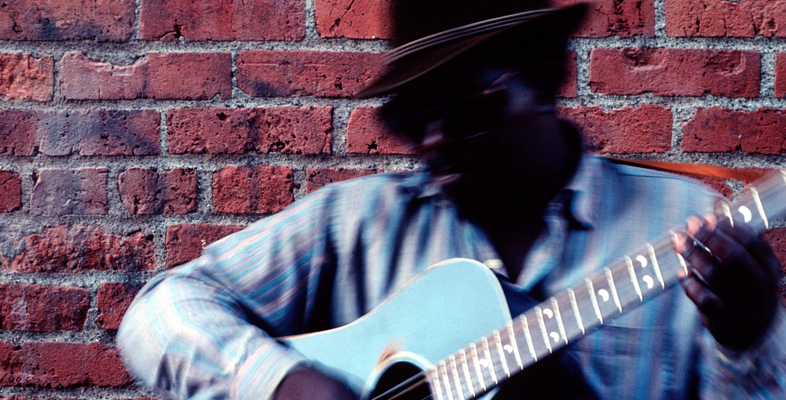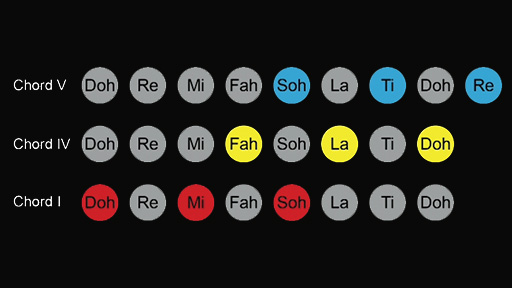12.2 Chords and primary chords
Accompanying the wistful or plaintive melodies, the second element that W.C. Handy wrote about was a repetitive chord sequence. This is another complex-sounding concept, but you don’t need to be a musician to understand it. A chord is simply two or more notes sounding simultaneously. We use the word harmony to describe generically how musical sounds fit together. The video in the previous section introduced you to scales. In that section you focused on the melody, that is, what the singer was doing. Now you are going to turn to the accompanying instruments and focus on harmony and the way in which chords are used. The next video will explain what chords are and how they are constructed. Watch it now before progressing to the next section.

Transcript: Video 2
[MUSIC PLAYING]
[MUSIC PLAYING]
[MUSIC PLAYING]
[MUSIC PLAYING]
[MUSIC PLAYING]
[MUSIC PLAYING]
[MUSIC PLAYING]
[MUSIC PLAYING]
[MUSIC PLAYING]
[MUSIC PLAYING]
[MUSIC PLAYING]
[MUSIC PLAYING]
There are many types of chords and many types of scale. You only need to be familiar with the concept of chords that have been explained here in order to understand the fundamental structures of the blues. Before you move on to the next section, review your understanding of chords by studying this graphic representation of the primary chords which you saw these briefly in the video.
Take some time now to review how the notes of each chord relate to each other and how each chord fits into the major scale that you heard in video 1. If you have access to a musical instrument you could have a go at creating some of these sounds yourself. Note that all the graphics illustrating the primary chords here and in the videos use the same primary colours so chord I will be red, chord IV will be yellow and chord V will be blue. In the video you learned about primary chords in the key of C. In practice, Doh is not always the note C but chord I is always constructed in the same way regardless of the note on which the scale starts, so these colours will remain unchanged, even though you may be listening to music in a different key.

